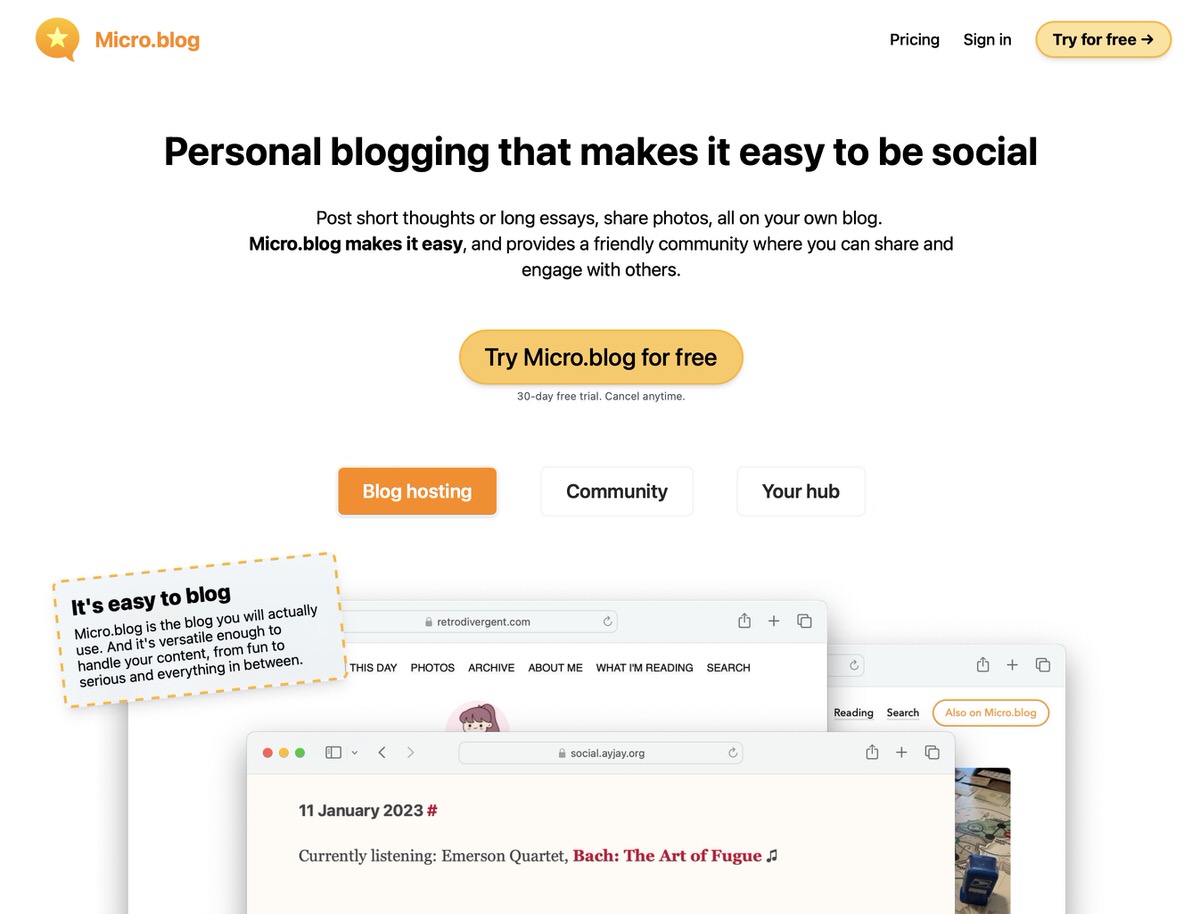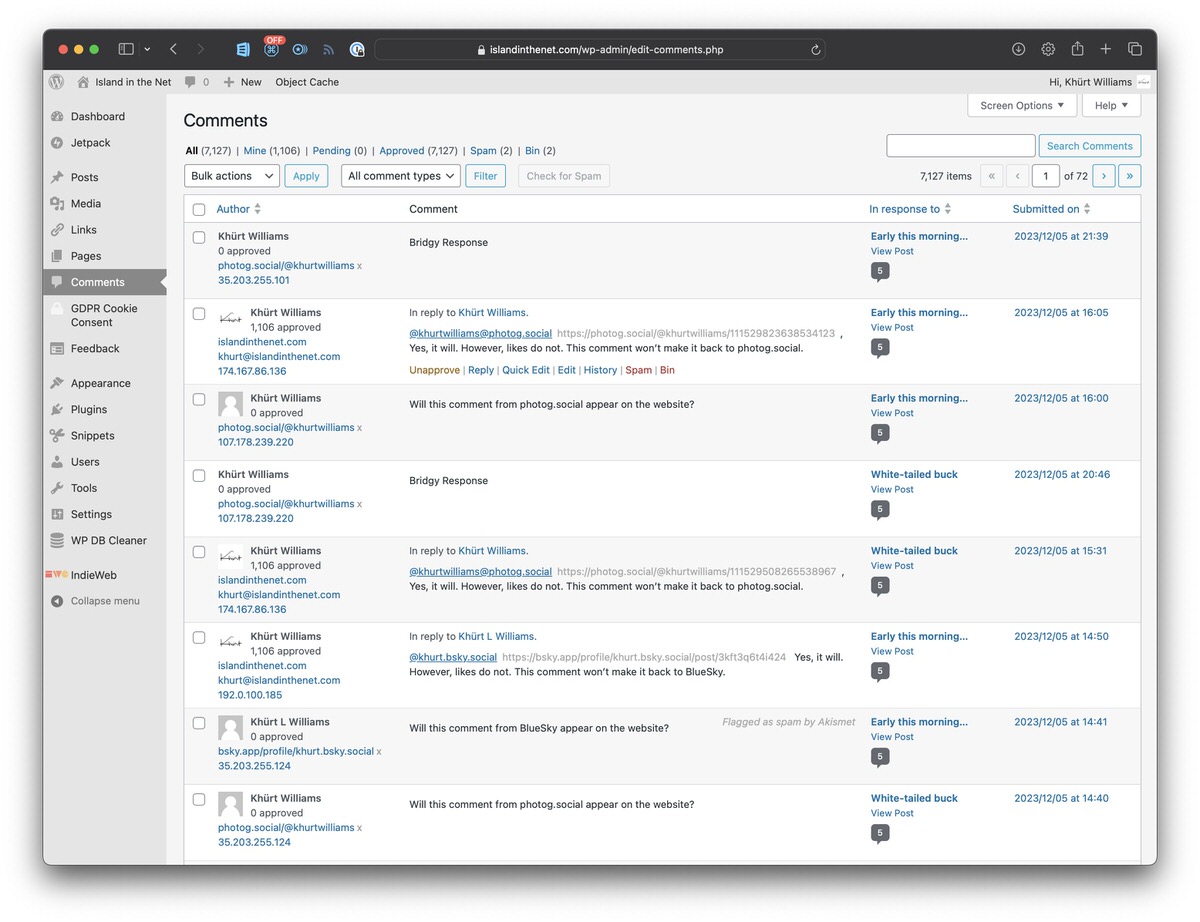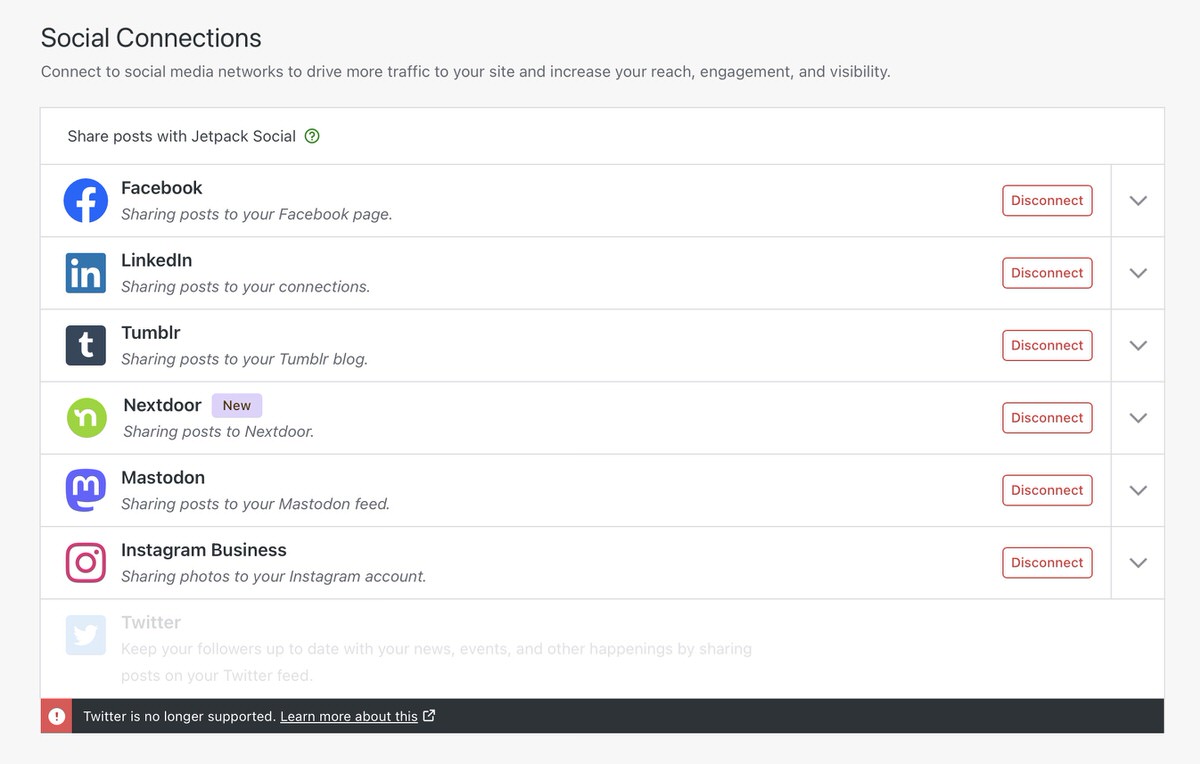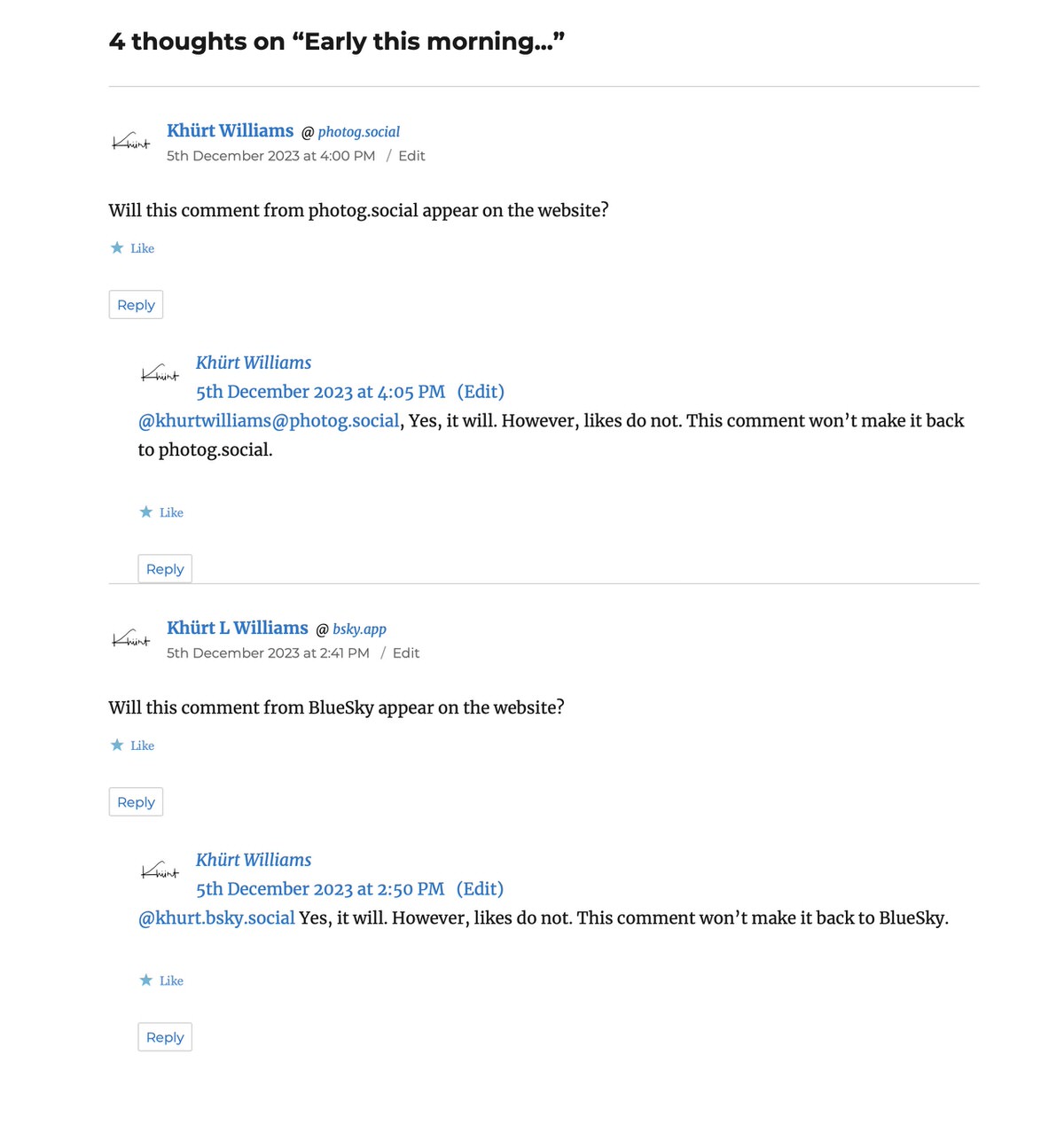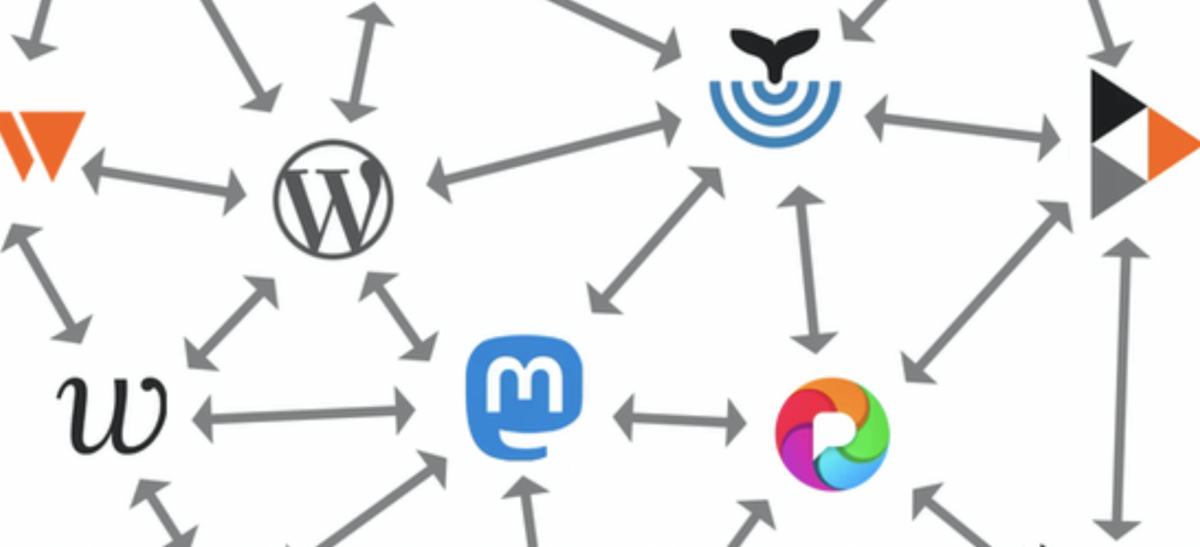micro.blog (µblog), has positioned itself as a platform aligning with the IndieWeb community. While its intentions are commendable, there are opportunities for improvement to enhance the overall user experience.
The platform has garnered recognition within the IndieWeb community and was featured prominently on the IndieWeb wiki, accompanied by informative content. Manton Reece, the creator of µblog, frequently emphasises its alignment with IndieWeb principles, portraying it as an Indie-friendly platform. Outbound webmentions are fully supported but only accepts incoming webmentions from sites which have registered on the service using their sending base URL.
However, there appears to be a discrepancy between the platform's perceived integration with IndieWeb architecture and its actual implementation. For instance, I've encountered challenges when trying to engage with µblog comments from my IndieWeb WordPress site, where my webmentions are sent and acknowledged but don't reflect on the timeline.
Micro.blog is not just an alternative silo. It’s worse than your average silo. It’s worse than Twitter. From the point of view of IndieWeb, it’s even worse than Facebook. Evgeny Kuznetsov
Certainly, µblog has many attributes of a traditional social media platform, which might lead to some confusion regarding its role in the IndieWeb ecosystem. While it makes strides towards IndieWeb principles, there's room for dialogue about how closely it adheres to the core tenets and how it can continue to evolve. This dialogue presents an opportunity for the platform to evolve and foster a more seamless experience for users.
Designed with Considerable Friction
µblog's approach often introduces significant friction. For users aiming to host a comprehensive photo blog, navigating µblog's interface can prove challenging. Unlike WordPress, where adding media is straightforward with the "Add Media" button, µblog requires managing two browser tabs simultaneously—one for editing and another for uploading. The upload page lacks search functionality, necessitating manual copying and pasting of HTML (or markdown) from the uploads page into the editor.
Additionally, µblog's themes do not support header images, resulting in limited visual customization. Upon post publication, only a title, link, and thumbnail image, often minuscule in size, are displayed publicly on the timeline.

The Micro.blog userbase seems actually pretty good at putting the effort into leaving real comments, but on some other sites (or if I had a blog that wasn’t integrated into a social media platform like this), this lack can result in people making post after post that gets no apparent response, and feeling like they’re shouting into the void. Jayeless.net
µblog users can see and managed whom they follow but are not privy to who follows them. This creates the possibility that a user might be following a number of people but no one is reading that users posts.
Challenges with Customer Support
Customer support, unfortunately, can be slow, especially for a paid service like µblog. Despite having an active subscription expiring on April 4, 2024, I've faced ongoing difficulties with posting to the timeline. Despite reaching out multiple times to support for assistance, I'm still awaiting a permanent resolution.

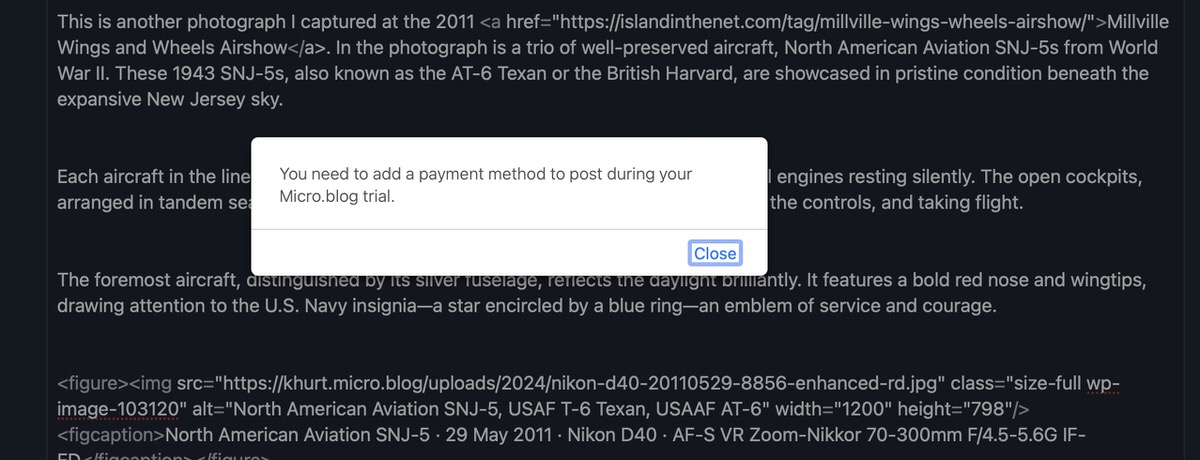
µblog's Social and Community Dynamics and Platform Limitations
The diversity of participants and resulting conversations are somewhat limited and are likely to remain so. This might suit some people just fine, but I appreciate people of different races, creeds, colors, economic backgrounds, and even those with differing political opinions. The kind of people you might find on a more mainstream social media service or the right Mastodon instance.PhoneBoy
µblog's simplicity is commendable, offering a clutter-free experience devoid of ads. However, this streamlined approach also translates into limitations, such as the absence of features like direct messaging, group chats, and advanced search functionalities.
Discoverability remains a challenge due to µblog's design choices aimed at curbing abuse and harassment. The lack of hashtag support and topic searches hinders users' ability to find content and connect based on shared interests.
The platform's emphasis on content ownership within the IndieWeb community is evident, yet it struggles with balancing freedom of expression with community safety. The cautious approach to user directories and content curation has implications for visibility and collaboration.
I always think appreciation, likes, reactions, and follower count should be made available privately to the content owner. Making them public should be an opt-in decision, if at all possible.Havn
Despite these challenges, µblog's community continues to offer valuable insights and suggestions for improvement, reflecting a shared desire for a more inclusive and feature-rich platform experience.
There seems to be a lot of community push back when anyone advocates for incorporating standard social media features in a manner that benefits all.
While some users may opt to disable "Likes" on their timeline, others, like myself, find value in having this feature available.numericcitizen
Evaluating µblog
Reflecting on my journey with µblog, I appreciate its vision but find the execution somewhat constrained by an emphasis on preventing harassment, which at times hampers community growth and user interaction. Throughout this discussion, the concept of "community" has emerged repeatedly, highlighting the significance of shared connections and interactions that contribute to a sense of belonging—an aspect that µblog could enhance.
The diversity of participants and resulting conversations are somewhat limited and are likely to remain so. This might suit some people just fine, but I appreciate people of different races, creeds, colors, economic backgrounds, and even those with differing political opinions. The kind of people you might find on a more mainstream social media service or the right Mastodon instance.PhoneBoy
In conclusion, there are several factors leading me to withhold a full recommendation for the current iteration of micro.blog. While acknowledging the challenges, it's worth noting that platform governance, akin to Twitter, rests with the owner. Despite this, I maintain a positive view of Manton's character, even if we haven't met in person. However, the platform's responsiveness to change requests could benefit from improvement.
Wishing for a future where µblog strikes a better balance between fostering a safe environment and encouraging vibrant community engagement, I bid farewell.
